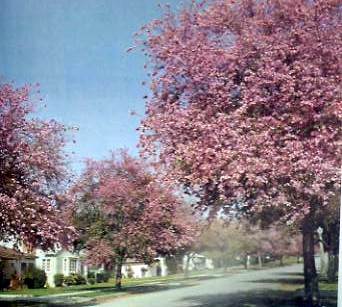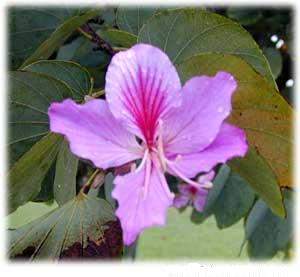
Bauhinia variegata
 Name:
Bauhinia variegata
Name:
Bauhinia variegata
Family: Leguminosae
Hardiness: 25°F (-4°F)
Common Names: Purple Orchid Tree, Mountain Ebony, Pink Camelsfoot
Blooms: Spring
Origin: India, China
The orchid tree is the most common Bauhinia cultivated in the sub-tropics and
tropics. A 20 to 25 foot (6-7.5 m) subject, it is inclined to bushiness or
multiple trunks. It also is extremely variable in its blooming period, foliage
quality, and leaf-holding characteristics according to soil, exposure, and
weather vagaries. It may drop its twin-lobed leaves in midwinter or remain
evergreen in moist hot areas. The principal show of orchid-lavender to purple,
white, or even pink, broad-petaled flowers is in late winter or early spring,
with
Following mild, dry winters, the display is sensational, and blossoms may
continue to form intermittently on different sections of the tree, occasionally
even into autumn. The plant likes heat but withstands considerable cold. It does
best in well-drained sunny locations. Fine specimens occur in many parts of the
world—Hong Kong, Costa Rica, Cuba, South Africa, southern California where it
occurs from coastal areas inland to Palm Springs, and central and southern
Florida.
Back to How to Grow Trees